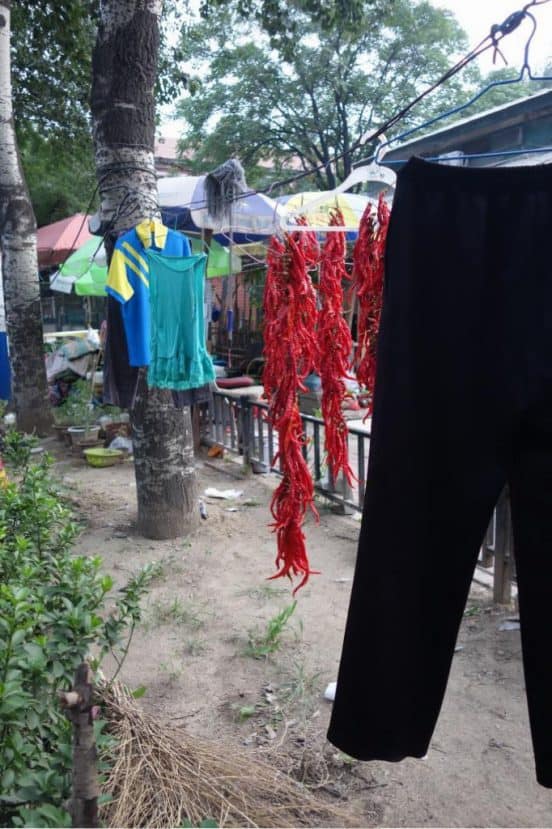It’s China’s “central south” region, basically Hunan and Sichuan, that are best known for the popularity of chile peppers there.
And it shows, for even just rolling through the country on a train, from the very south to Beijing up north, it was right as we went through Hunan that chilli appeared in ‘fields’ terraced out of the train tracks’ embankment, for example.
Even a city like Beijing, up north and rather less fond of the spicy taste, finds its way to peppers.
At the street stands selling fried rice or noodles or other snacks and breakfast items, even here, one of the most-heard questions is “Do you eat chilli?” And here, too, the various noodle stalls have a bowl of chilli on the table, not salt or pepper.
Some of the sundry supermarket snacks, too, are spicy in various ways. And the “Do you eat hot?” conversations so everyday in Hunan are sometimes to be overheard here, too – as I found with a little boy in the supermarket.
He grabbed on to a bag of chips he wanted, his dad engaged him in a talk about how that particular kind, a spicy one, might not be the one he really would like…
ChiliCult-ist that I am, I also notice the chile peppers being grown or dried the places I walk past.




It extends to the food that has been put into a modernized, fast-food context, too. KFC doesn’t give you salt, let alone pepper, but little packs of chilli powder (or at least, so they did in Hunan); “Real Kungfu” (Zhen GongFu) just now has Gong Bao Ji Ding (Kung Pao Chicken) Rice on the menu – with not too little chilli.

And then there was the rather more traditional Fu Niu Tang, which just made it into international reporting with its claim to the world’s spiciest Changde-style rice noodles…


Leave a Reply
You must be logged in to post a comment.